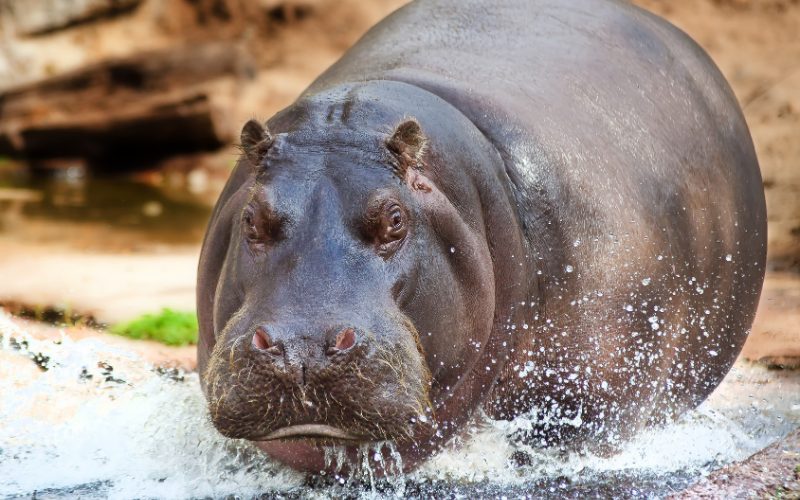The Mighty Hippopotamus: A Large Semi-Aquatic Mammal
Hippos are fascinating creatures that are native to Africa. They are abundant in Zimbabwe and can be seen quite easily on safari. They are large semi-aquatic mammals, easily recognizable by their huge mouths and sharp teeth. Despite being herbivores, they are highly territorial and considered one of the most dangerous animals in Africa. In this blog post, we'll dive deeper into the world of the mighty hippopotamus.

Physical Characteristics
Adult hippos are massive creatures, with males weighing between 3,000 to 9,000 lbs and females ranging from 2,000 to 5,000 lbs. Some hippos have been known to weigh up to 11,000 lbs. They are the third-largest land mammal, after elephants and rhinos. Hippos have a barrel-shaped body, with short legs, a broad snout, and small eyes and ears. They have a thick skin that is virtually hairless, and their skin secretes a natural sunscreen that protects them from the sun's harmful rays.
Habitat and Diet
Hippos are native to sub-Saharan Africa, where they inhabit rivers, lakes, and swamps. They are mostly nocturnal and spend most of their day in water, coming out at night to feed on grass. Hippos are primarily herbivores, and they can consume up to 150 pounds of grass per day. They also eat other aquatic plants and fruits that have fallen into the water. Although they are herbivorous, they have been known to eat small animals, such as fish, on occasion.
Behavior
Hippos are known for their aggressive behavior and are considered one of the most dangerous animals in Africa. They are highly territorial and will defend their territory fiercely. Despite their slow speed on land, they are powerful and can run at speeds of up to 30 km/h in short bursts. They are also strong swimmers and can move quickly in water. It's best to maintain a safe distance from hippos to avoid any potential danger.
Interesting Facts
In German, the hippo is translated to be a Nile horse, possibly because these animals also inhabit the Nile. The River Nile is the longest river in Africa and the main water source for Egypt and other countries in the region. Hippos have been known to inhabit the Nile river and its banks.
Hippos are social animals and live in groups of up to 30 individuals. They communicate with each other through vocalizations and body language, such as opening their mouths wide to show aggression or submission.
Hippos are not known for their speed on land, but they are surprisingly agile and can make quick turns and sudden stops. They can also hold their breath for up to 5 minutes underwater.
